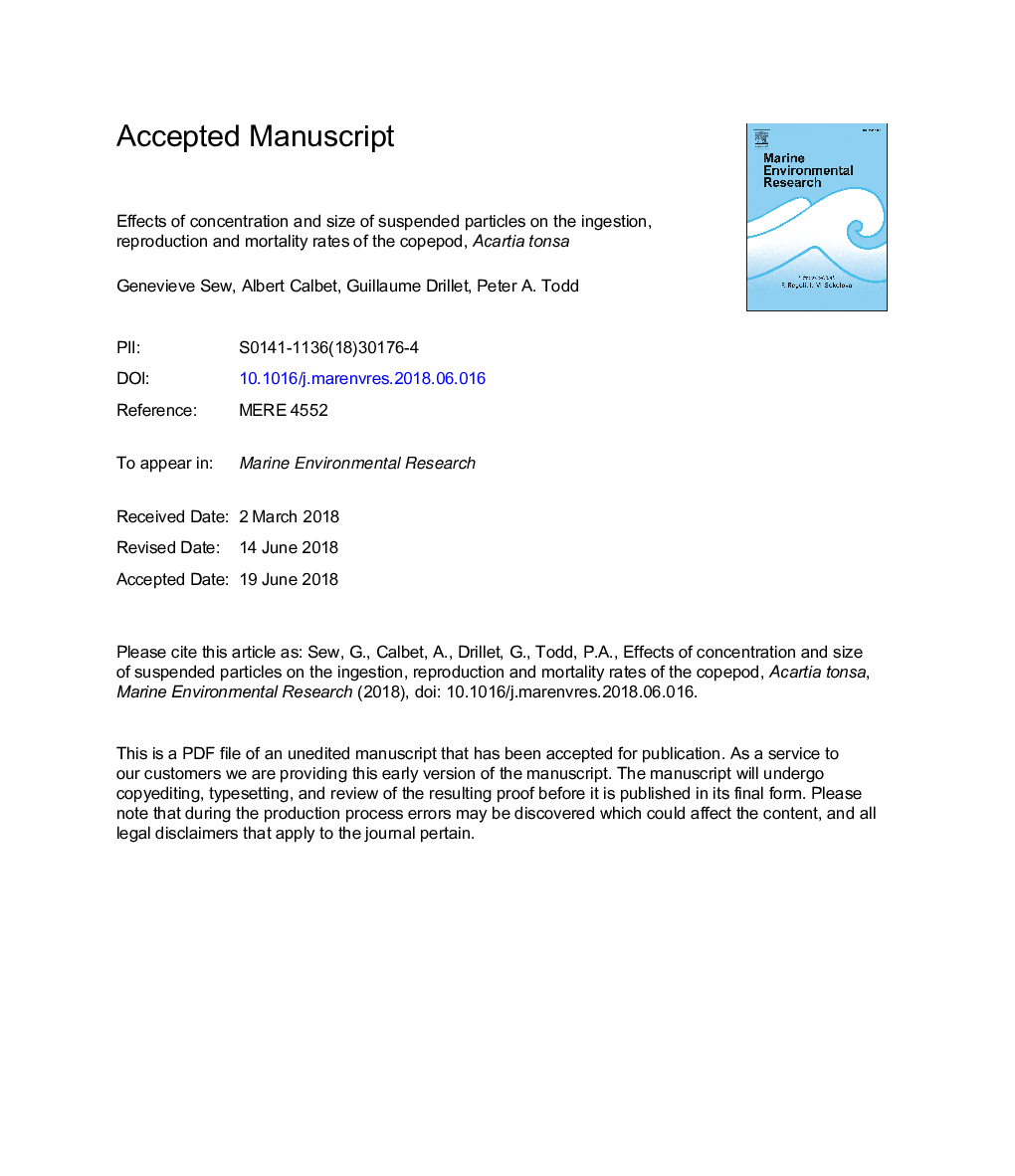| Article ID | Journal | Published Year | Pages | File Type |
|---|---|---|---|---|
| 10223915 | Marine Environmental Research | 2018 | 50 Pages |
Abstract
Suspended sediments are a common occurrence in the marine environment. They can be generated by natural causes, including waves and currents, or brought about by anthropogenic activities such as reclamation and dredging. High sediment concentrations are known to have negative consequences on copepods; however, the impact of sediment size has largely been overlooked. Here we examine the effects of sediment size and concentration in combination with varying algae concentrations on the ingestion rate, egg production, hatching success and survivorship of the copepod species, Acartia tonsa. High concentration of 'small' sediments at 'low' food availability had the greatest negative impact on all parameters except hatching success. Greater food concentration was able to mitigate some of these effects. High concentrations of 'large' sediments also reduced egg production rates, possibly due to A. tonsa avoiding falling particles. We conclude that it is important to examine the particle size distribution when evaluating the impacts of suspended sediments on copepods.
Related Topics
Physical Sciences and Engineering
Earth and Planetary Sciences
Oceanography
Authors
Genevieve Sew, Albert Calbet, Guillaume Drillet, Peter A. Todd,
